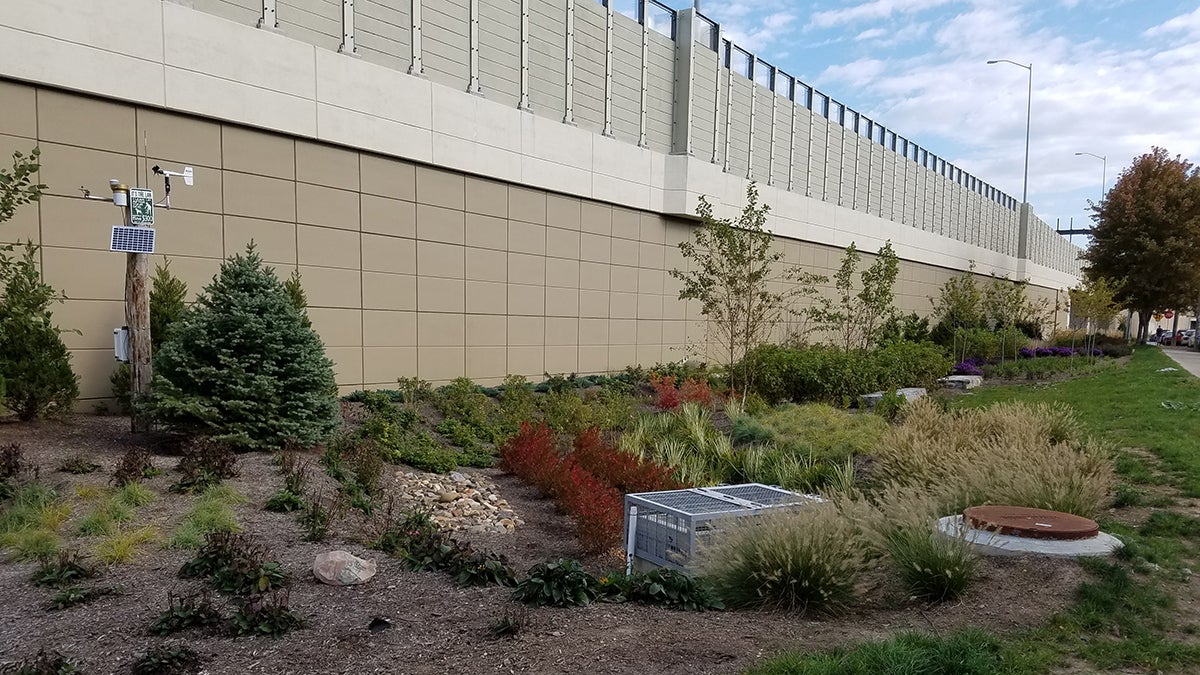I-95 overhaul includes green infrastructure to reduce river pollution

This garden abutting I-95 in Fishtown is designed to absorb stormwater runoff from the highway. (Robert Traver)
Researchers from Villanova and Temple universities are working with the Pennsylvania Department of Transportation to decrease the amount of runoff from the rebuilt Interstate 95 corridor to the city’s rivers.
When I-95 was built, there were no stormwater regulations. When it rained, water from the highway ran into sewers. When it rained a lot, that stormwater — along with raw sewage — spilled over into the Delaware and Schuylkill rivers.
New regulations require the road, currently being rebuilt, to reduce runoff with infrastructure capable of treating the first 1 to 1.5 inch of runoff.
“They’re building a lot of green infrastructure, rain gardens and bioinfiltration sites that weren’t there before,” said Villanova engineering professor Robert Traver, who is working on the project. “So that means all those acres of impervious surface that used to go directly into the combined sewers now get cut off and reduce the volume tremendously.”
That in turn reduces the volume of stormwater — and sewage — going into the rivers.
It’s a big undertaking. For example, the Girard Avenue interchange reconstruction, a 3-mile piece of the I-95 project that runs from Race Street to Allegheny Avenue, will create 27 acres of green space, according to AECOM, the engineering firm contracted to do the work. Green infrastructure takes up 5 to 7 percent of the total budget for this segment of the I-95 project.
“In many instances, the planted portions of the right-of-way function as a backyard for the highway’s neighbors, providing aesthetic enhancement, a visual buffer, noise attenuation, and carbon sequestration,” wrote AECOM’s Edwina Lam in an email.
Pipes deliver water from the elevated road to gardens at street level, where soil and plants absorb the runoff.
“So this is a very strange area of engineering, because we have to worry about plants, we have to worry about geology, we have to worry about the water, we have the environmental concerns, and, frankly, we have to worry about social acceptance,” Traver said.
The team has been building the rain gardens for about a year, and started collecting data on how well they work two months ago. They’d been underestimating the sites’ performance — the gardens absorb more water than they’d predicted. With more data and better design, Traver said, the new infrastructure could be even more efficient going forward.
They’ll use what they learn to tweak the designs of the rain gardens in the next phases of the I-95 overhaul project.
WHYY is your source for fact-based, in-depth journalism and information. As a nonprofit organization, we rely on financial support from readers like you. Please give today.




